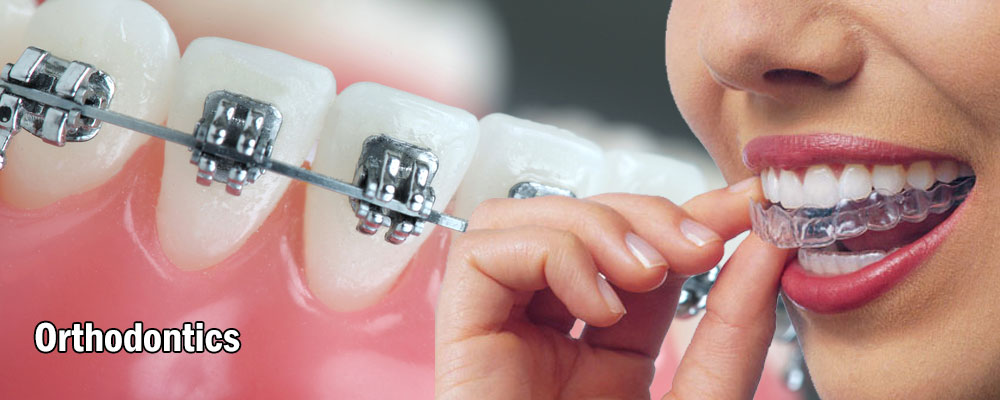Orthodontics

Orthodontics is the branch of dentistry that corrects teeth and jaws that are positioned improperly. Crooked teeth and teeth that do not fit together correctly are harder to keep clean, are at risk of being lost early due to tooth decay and periodontal disease, and cause extra stress on the chewing muscles that can lead to headaches, TMJ syndrome and neck, shoulder and back pain. Teeth that are crooked or not in the right place can also detract from one's appearance.
The benefits of orthodontic treatment include a healthier mouth, a more pleasing appearance, and teeth that are more likely to last a lifetime.
A specialist in this field is called an orthodontist.
How do I Know if I Need Orthodontics?
Only your dentist or orthodontist can determine whether you can benefit from orthodontics. Based on diagnostic tools that include a full medical and dental health history, a clinical exam, plaster models of your teeth, and special X-rays and photographs, an orthodontist or dentist can decide whether orthodontics are recommended, and develop a treatment plan that's right for you.
If you have any of the following, you may be a candidate for orthodontic treatment:
- verbite, sometimes called "buck teeth" — where the upper front teeth lie too far forward (stick out) over the lower teeth
- Underbite — a "bulldog" appearance where the lower teeth are too far forward or the upper teeth too far back
- Crossbite — when the upper teeth do not come down slightly in front of the lower teeth when biting together normally
- Open bite — space between the biting surfaces of the front and/or side teeth when the back teeth bite together
- Misplaced midline — when the center of your upper front teeth does not line up with the center of your lower front teeth
- Spacing — gaps, or spaces, between the teeth as a result of missing teeth or teeth that do not "fill up" the mouth
- Crowding — when there are too many teeth for the dental ridge to accommodate
How Does Orthodontic Treatment Work?
Many different types of appliances, both fixed and removable, are used to help move teeth, retrain muscles and affect the growth of the jaws. These appliances work by placing gentle pressure on the teeth and jaws. The severity of your problem will determine which orthodontic approach is likely to be the most effective.
Fixed appliances include:
Braces — the most common fixed appliances, braces consist of bands, wires and/or brackets. Bands are fixed around the teeth or tooth and used as anchors for the appliance, while brackets are most often bonded to the front of the tooth. Arch wires are passed through the brackets and attached to the bands. Tightening the arch wire puts tension on the teeth, gradually moving them to their proper position. Braces are usually adjusted monthly to bring about the desired results, which may be achieved within a few months to a few years. Today's braces are smaller, lighter and show far less metal than in the past. They come in bright colors for kids as well as clear styles preferred by many adults.
